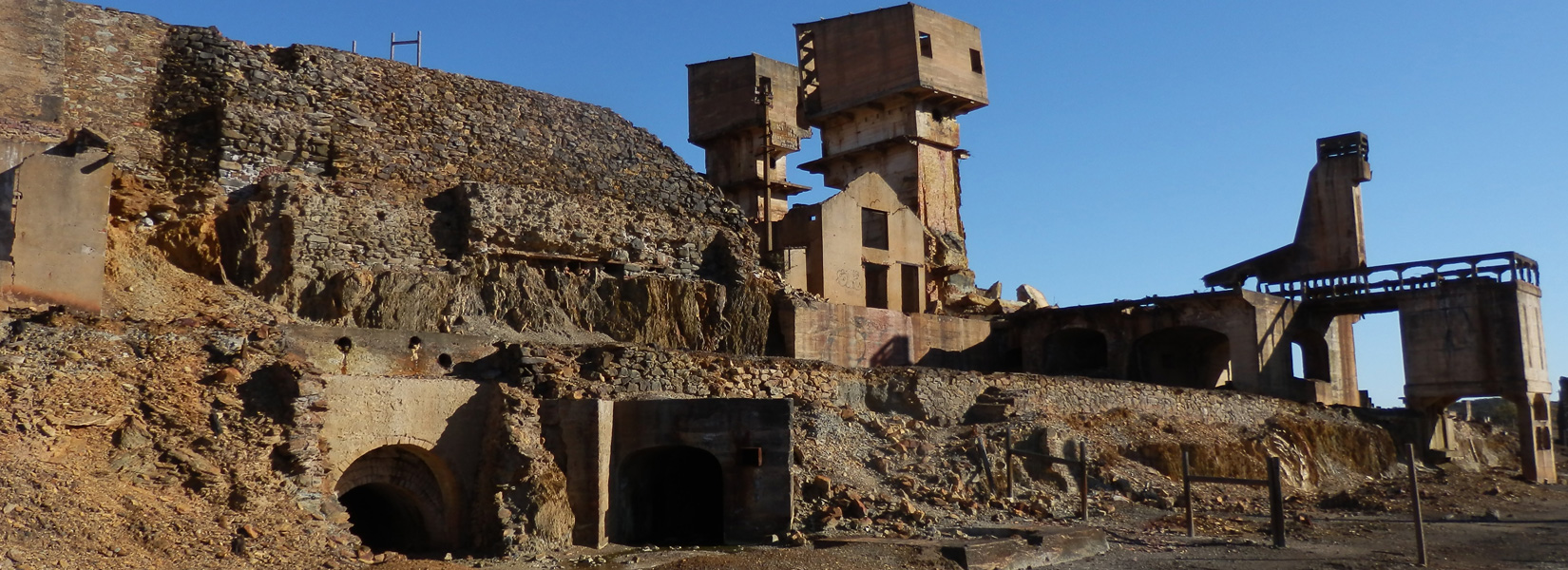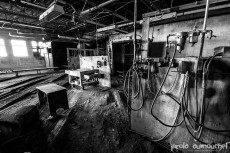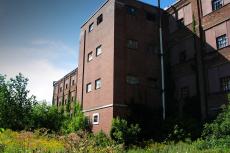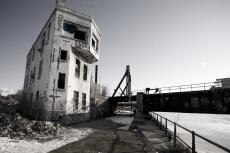Cynically, we could almost say that the factory is as large as the village in which it is located. You should know that we are far away in the countryside, it that kind of place where everybody know each other by his first name. At first glance,...
The abandoned mine of Achada do Gamo
An abandoned open pit mine
Located in São Domingos (province of Alentejo) south of Lisbon, capital of Portugal, the mine of Achada do Gamo is an abandoned open pit mine. Located in the heart of the Iberian Pyrite Belt, which extends from southern Portugal to Spain, the region of the mine consists of the outcropping volcanic and sedimentary rocks that vary in age from 542 to 251 million years.
The history of mining in the area dates back over 4300 years when Phoenicians and Carthaginians already harvested copper during the Chalcolithic period (Copper Age).
It will nevertheless expect the ancient Romans who intensified the production of copper on a large scale. For nearly 400 years, they exploit a mine of copper and pyrite. At this time, the mines could reach a depth of over 40 meters.
The industrial revolution modernize extraction techniques and a British company called Barry Mason took control of the São Domingos mine. They create the Achada do Gamo mine around 1858 and it will continue its operation until 1966, when it closed due to ore depletion. With its intensive operations, and hundred years later at its closure, the open pit mine was a depth of 120 meters and a perimeter of approximately 2 km. It is calculated that all the periods of mining resulted in the production of 25 Mt, and mine waste material in the area is estimated at several hundred thousand tons. In this context, important environmental problems are associated, which are visible within an area around 50 km2.
Related content
Located on the banks of the Canal Lachine, the old Cie de recyclage de papier de Montréal inc. factory have been destroyed in part since 2009. Today, there are only the old building located behind the front store who is still there.
When...
Destroyed by mechanical shovels in 2011, it is a true slice of history of the city of Saint-Jean-sur-Richelieu who was destroyed that day in February. The adventure of the Singer factory has lasted over 100 years and has gave work to thousand of...
Built in 1930, the Wellington tower has ceased operations in 2000. Despite the years that have passed and graffiti artists who came to express their art, the structure of the old tower is still ok. When it was in operation, that's where that were...























